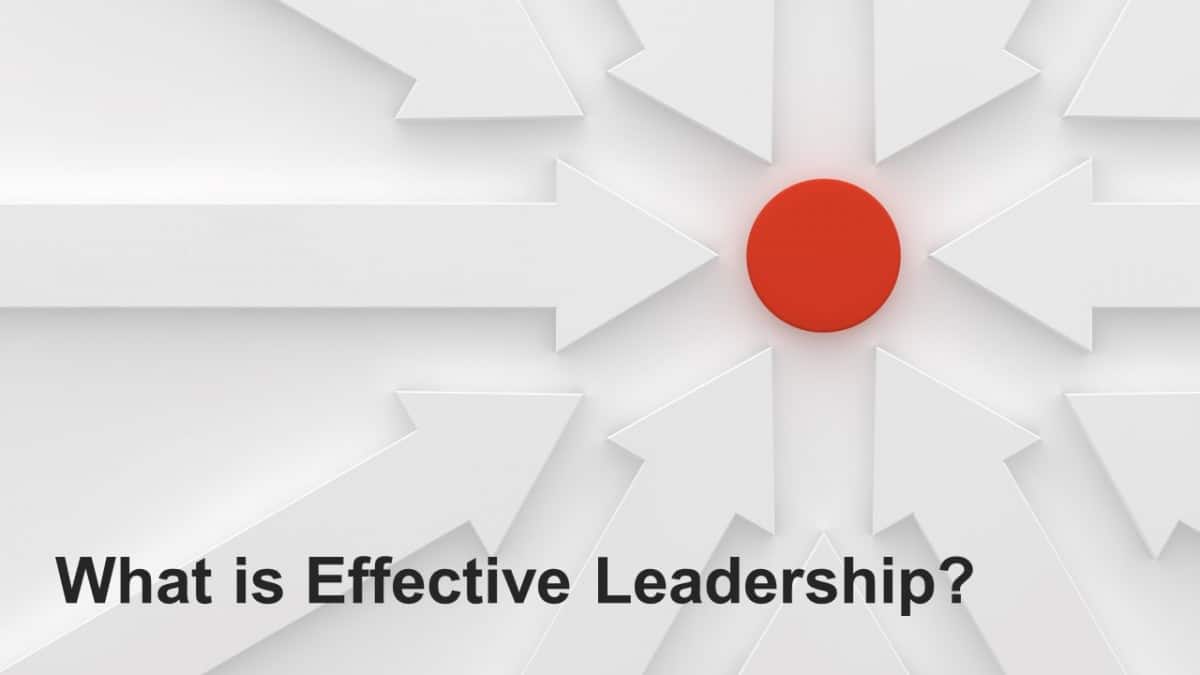Share:
Matthew Wride, Contributor

For nearly a decade, I taught an introductory political science class at a local university. We used an interdisciplinary approach that explored basic economic theory, American history, and elements of political philosophy.
When introducing the section on economics, I began with the premise that economics is best viewed as the study of scarcity –– what do you do when there are not enough goods and services to go around?
Stated differently, economics is the social science that examines how we use limited resources to satisfy unlimited human wants.
To many of my students, this was a new concept. They had either assumed economics was about finance or that it was about banking and interest rates.
Yet, economics is truly concerned with the fundamental human question of what we do when we all want something, and there is not enough to go around.
Scarcity does not impact only politicians and geopolitical bodies, it operates with equal force inside organizations of all shapes and sizes. Moreover, scarcity is a key catalyst in life and business because it forces us to choose.
Choice requires decision-making. Better decisions lead to better results. Effective leaders make the best decisions.
Even with a well-funded corporation, there are still never enough resources. Everyone clamors for more.
There might be a need for more employees. There might be a need for more innovation. There may not be enough time to develop individuals in the hierarchy. A leader is constantly bombarded with requests for more.
My brief introduction allows me to present my primary premise for this article.
Effective leadership is not merely about charisma, influence, special traits, or keen intellect. Rather, effective leadership is the ability to persuade others to forego their own self-interest and cooperate in solving the challenges presented by scarcity to do their best work and achieve success.
Stated differently, great leaders do a lot of important things, but maybe their most important function should be to help organizations and teams properly address scarcity.
The Root Cause
Corporate strategy, at its core, is understanding what the organization can and should do considering its scarce resources; maximizing stakeholder value while also meeting environmental and social commitments.
It should be noted that scarcity finds itself at all levels of the organization, whether it is the CEO thinking about various market positions or a scrum master trying to develop a product with an understaffed team.
My purpose in framing leadership through the lens of scarcity is so that leaders can benefit from understanding what I believe to be the root cause of so many of their challenges. In essence, I am following what is done in quality initiatives where we go beyond merely repairing a problem to understanding and fixing the underlying triggers.
For example, if a bearing goes bad in a machine, our goal is to not only repair the bearing but also fix the root cause of why the bearing failed, such as the unlevel alignment of the machine.
By framing our challenges in the context of scarcity, we are automatically working at the root source of the challenges we face in business.
Scarcity Creates Conflict
As noted, scarcity forces us to choose, and, therefore, we encounter conflict as we grapple with our choices.
Scholars suggest there are three variations of conflict inside the workplace: task conflict, relationship conflict, and value conflict. This article will not directly address relationship conflict, or what we call interpersonal conflict.
Interpersonal conflict is that natural conflict we experience when we hang out with other human beings. We may not like the way they chew gum, or they spend way too much time telling us about their weekend trips, or they cook fish in the microwave.
Managers and leaders must deal with interpersonal conflict all the time, and they use a mix of college psychology, grandma’s homespun advice, and whatever else they find through Google.
While interpersonal conflict is painful and challenging, it does not typically threaten an organization in a meaningful way. The other two forms of conflict, however, do present real risks to the organization.
Task conflict is disagreement as to how the work should get done and who should do it, and value conflict is about what the organization should look like, what it should do, and the ultimate value it should deliver to others.
Both task and value conflict are forms of what I call objective-driven conflict. Objective-driven conflict is when there is disagreement as to how the organization should pursue its objectives and what those objectives should be. In other words, how the organization should position itself to deliver the most value possible.
One quick caveat. Sometimes disagreement is not all that distasteful. When a group of executives sits down to think about next year’s priorities, the process can be collaborative and fulfilling, but it is still based on conflict – what should we do with scarce resources? Thus, conflict exists even if the environment feels rewarding.
Using Conflict to Solve the Scarcity Challenge
Conflict is a double-edged sword. It is an outcome of scarcity that has potentially destructive power; yet, when controlled and used by an effective leader, conflict can be a productive tool to help clarify choices.
In productive conflict, ideas are openly and transparently exchanged, and conflict is approached with impartiality and respect. The idea is to identify and address the source of the conflict, not just its symptoms. When conflict is approached in this way, it helps to preserve positive relationships as the conflict is sorted out.
Unproductive conflict can occur when we fail to address the issue that is actually the source of the conflict. This sort of conflict ends up being very frustrating for all parties because it does not address the issue that is causing the conflict and can be characterized by disrespect and further conflict.
In environments where unproductive conflict is frequent, productivity and performance can suffer. It can also erode workers’ trust in leadership and each other.
Strong communication, a work environment that is pro-collaboration, and mutual respect among staff are needed to prevent unproductive conflict from growing into potentially toxic situations that can hurt morale. Leaders need to possess a high degree of emotional intelligence to successfully navigate conflict and ensure that it stays productive.
In addition to high emotional intelligence, leaders need to possess a clear-eyed view of scarcity to take advantage of productive conflict when it arises. Our research suggests there is a common roadmap that can be followed.
Acceptance
Recognize the fact that there will never be enough to go around. When leaders do this, they stop wasting valuable energy trying to make everything perfect and everyone happy. They accept the fact that scarcity is a problem that can never be fully solved.
Instead of ducking the issue, however, successful leaders acknowledge the scarcity problem head-on and solicit others in helping them solve the scarcity challenges inside their organizations.
There is a lot of freedom in fully understanding and accepting the “rules” of the game.
Find the Real Need
Try to understand the real human “need” at question. For example, rather than accepting at face value a request to hire more people, go deeper.
Maybe the real need is to find individuals that possess a different skill set. Maybe those skills could be obtained by training as opposed to hiring. Possibly, the need could be satisfied through outside vendors as the scarcity problems are only temporary.
Occasionally, an underlying need is non-monetary in nature and might be solved by focusing on team building and bonding.
Clarify the Options
Try to understand the real human “need” at question. For example, rather than accepting at face value a request to hire more people, go deeper.
Respond to scarcity challenges by helping team members understand there are three basic strategies when managing scarcity:
- Increase the economic output (make more)
- Reduce wants
- Use existing resources more efficiently.
For example, instead of layoffs, the answer might be that everyone takes an unpaid day off every other week. Or maybe the answer is to focus the entire team on selling one key product that will produce revenue the fastest.
Explain the Why
A great leader explains the “why” behind their decisions. Most of us realize that our wants are unlimited, and our resources are finite.
What we have learned, from macroeconomics, however, is that people will accept scarcity and inequality if there is fairness of opportunity and equality in the process.
Make Conflict Productive Through Procedural Equity
Having addressed scarcity head-on, the next step is to make conflict productive through procedural equity. The starting point is an effective framework for conflict that is procedurally fair and equitable.
A fair process should contain most of the following elements:
Protect Voice and Encourage Sharing
Design and adopt processes that promote psychological safety, build trust, and protect the individual voices. Strive to build a culture that values a marketplace of ideas.
Let every idea have a chance but ensure that each idea is put to the right tests to confirm that only winning ideas survive.
A free marketplace of ideas is built upon a foundation where individuals can share their thoughts and feelings without fear of retribution. Make sure that everyone understands that it is okay to risk and okay to fail.
Build the Framework
Leadership earns its stripes when it helps create and manage a framework in which conflict can properly function as each party inertially moves towards agreement.
A leader’s framework should identify everything from how ideas are proposed, and how long they can be debated, to outright bans on name-calling, etc. There must be a transparent understanding of what type of behavior is out of bounds.
A leader’s job is to explain and clarify the no-nos. For example, once a plan has been adopted, it should be considered bad form and a career derailer for a leader to continue challenging or attacking an agreed-upon plan.
Use Advocacy
Productive conflict (sometimes called “healthy” conflict) uses principles of advocacy that function inside our agreed-upon framework to: (i) surface and promote worthwhile objectives; (ii) provide reasoning and support for those objectives; and then (ii) cross-examine and critique the objectives to arrive at the best possible options.
Never underestimate the power of letting team members express their viewpoints. The key is to keep it at a healthy conflict and not let it devolve into combat.
Use Extra Care When Dealing With Remote Employees
When dealing with remote workers, productive conflict can be doubly challenging. Most of us rely extensively on nonverbal cues, which can be hidden when conducting virtual meetings.
Thus, care must be given to make sure viewpoints are heard and fair opportunity is afforded to all participants. Leaders should take on the role of not only an observer but also act as a music conductor who helps manage and direct the process.
Focus on Eventual Agreement
Effective leaders guide individuals toward agreement. Internal agreements, while not necessarily legally binding, help create common understanding and buy-in. Certainly, such agreements can be changed or abandoned, but only at some cost, such as reputational damage.
A good example of an internal agreement is a strategic plan. If participants are given a fair chance to voice their desires and concerns, then they will accept the need to support and follow through on the plan that is eventually adopted.
As noted above, if a conflict framework is procedurally fair, most individuals will follow the rules. Thus, we can use the principles of tension and counterpoise to surface and vet the organization’s best objectives in the context of its scarce resources.
My simple premise is that effective leadership has its roots in identifying, understanding, and managing two very primal and interrelated human emotions –– scarcity followed by conflict.
Leaders armed with this understanding will begin to see their role more clearly as one who helps bring out the best in others. They will more readily recognize these elemental urges inside their organization, and then help employees set aside self-interest in favor of the organizational good.
Leaders who successfully manage scarcity and conflict not only succeed but are also remembered and beloved.

Matthew Wride is a business executive that focuses on making human resources a strategic partner in organizations of all sizes and types. Matthew serves as the President of Decision Wise, an Employee Experience solutions provider.
Prior to making the transition to business management, Matthew was a corporate attorney in Salt Lake City, Utah. Prior to practicing law, he was a consultant with Deloitte. For years, Matthew was an adjunct professor of political science at Utah Valley University in Orem, Utah. In 2018, he was recognized by Utah Business Magazine as a CXO of the year.
Matthew also serves as a member of the Board of Directors for Wasatch Educational, Inc., which is the parent entity for Rocky Mountain University of Health Professions in Provo, Utah (RMU). RMU is a regionally accredited university focused on graduate programs in healthcare. Matthew also serves on the Board of Directors for the parent company that owns and oversees the Noorda College of Osteopathic Medicine in Provo, Utah.
Matthew is co-author of the book, The Employee Experience: How to Attract Talent, Retain Top Performers, and Drive Results, published by Wiley & Sons.


